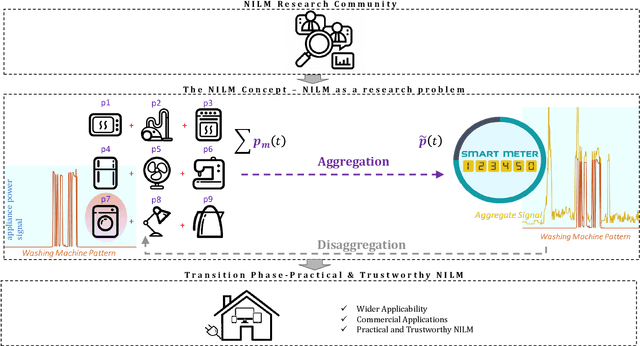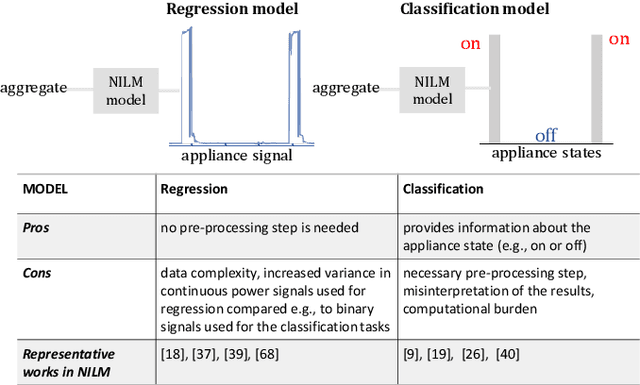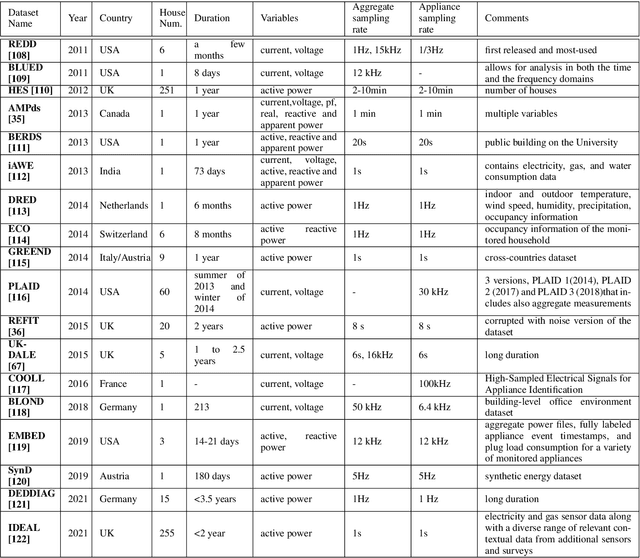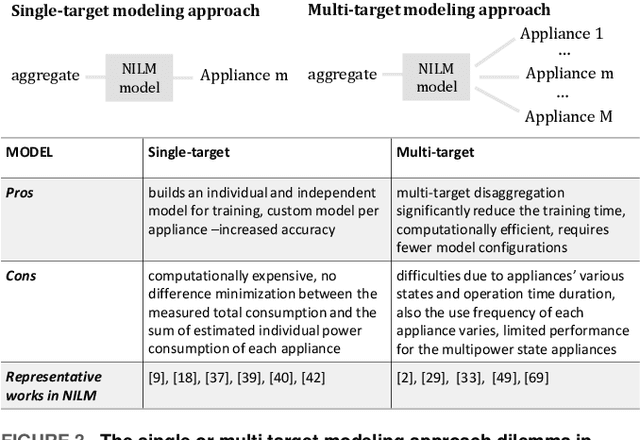Towards trustworthy Energy Disaggregation: A review of challenges, methods and perspectives for Non-Intrusive Load Monitoring
Paper and Code
Jul 05, 2022



Non-intrusive load monitoring (NILM) is the task of disaggregating the total power consumption into its individual sub-components. Over the years, signal processing and machine learning algorithms have been combined to achieve this. A lot of publications and extensive research works are performed on energy disaggregation or NILM for the state-of-the-art methods to reach on the desirable performance. The initial interest of the scientific community to formulate and describe mathematically the NILM problem using machine learning tools has now shifted into a more practical NILM. Nowadays, we are in the mature NILM period where there is an attempt for NILM to be applied in real-life application scenarios. Thus, complexity of the algorithms, transferability, reliability, practicality and in general trustworthiness are the main issues of interest. This review narrows the gap between the early immature NILM era and the mature one. In particular, the paper provides a comprehensive literature review of the NILM methods for residential appliances only. The paper analyzes, summarizes and presents the outcomes of a large number of recently published scholarly articles. Also, the paper discusses the highlights of these methods and introduces the research dilemmas that should be taken into consideration by researchers to apply NILM methods. Finally, we show the need for transferring the traditional disaggregation models into a practical and trustworthy framework.
 Add to Chrome
Add to Chrome Add to Firefox
Add to Firefox Add to Edge
Add to Edge